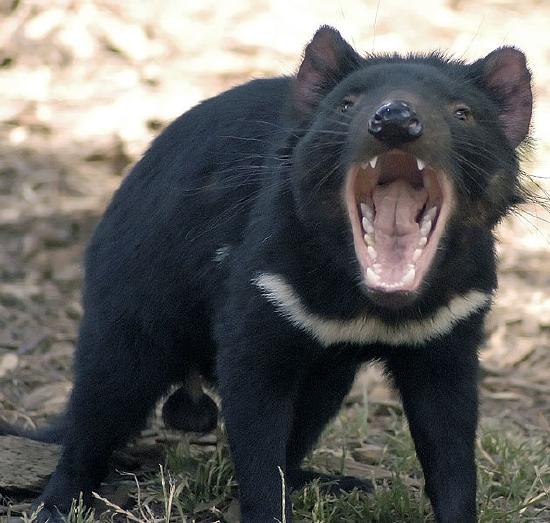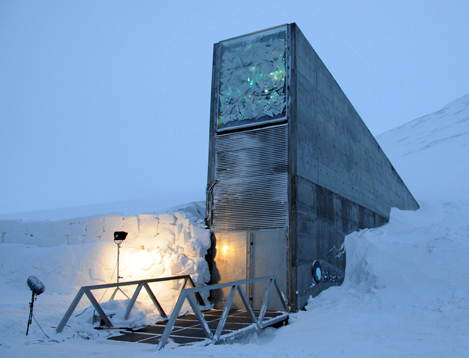9.3: Genetic Diversity
- Page ID
- 36986
In contrast to ecosystem and species diversity, genetic diversity is a measure of the variability among individuals within a single species. Genetic diversity is represented by the variety of alleles present within a population. A gene represents the fundamental physical unit of heredity, and alleles are specific versions of these genes. For example, there is a gene for flower colors in peas, one allele for that gene carries information for white flowers while another allele carries information for purple flowers. Alleles are passed from parent to offspring. Mutations, changes in the DNA sequences that usually result from errors during DNA replication, are the original source of new alleles.
As a result of sexual reproduction, individuals can have different allele combinations for each gene. Genetic diversity provides the raw material for evolutionary adaptation, the process by which the genetic composition of populations change over time in a way that makes it more suited to the environment.
Loss of genetic diversity makes a species less able to reproduce successfully and less adaptable to a changing environment or to a new disease. Small populations of species are especially susceptible to loss of genetic diversity. When a species loses too many individuals, it becomes genetically uniform. Some of the causes for the loss in genetic diversity include: inbreeding among closely related individuals and genetic drift, the process by which the genetic composition of a population fluctuates randomly over time.
Low genetic diversity makes the Tasmanian devil (figure \(\PageIndex{a}\)) especially vulnerable to Devil Facial Tumor Disease (DFTD), a cancer that threatens it with extinction. Contagious cancers are typically spread by viruses, which can transmit cancer-causing genes; however, in the case of DFTD, the cancerous cells themselves are spread among individuals. Usually, the immune system can recognize cancerous cells, infected cells, and foreign cells, but DFTD cells evade the immune system. If Tasmanian devils had high genetic diversity, it is likely that some individuals would have alleles that made them resistant to DFTD. These individuals would survive and reproduce more frequently than others, and the resistant alleles would become more common in the population (evolutionary adaptation would occur). Because Tasmanian devils have low genetic diversity, there is less opportunity for such evolutionary adaptation.

Genetic diversity is important to agriculture. Since the beginning of human agriculture more than 10,000 years ago, human groups have been breeding and selecting crop varieties. This crop diversity matched the cultural diversity of highly subdivided populations of humans. For example, potatoes were domesticated beginning around 7,000 years ago in the central Andes of Peru and Bolivia. The people in this region traditionally lived in relatively isolated settlements separated by mountains. The potatoes grown in that region belong to seven species and the number of varieties likely is in the thousands. Each variety has been bred to thrive at particular elevations and soil and climate conditions. The diversity is driven by the diverse demands of the dramatic elevation changes, the limited movement of people, and the demands created by crop rotation for different varieties that will do well in different fields.
The potato demonstrates a well-known example of the risks of low crop diversity: during the tragic Irish potato famine (1845–1852 AD), the single potato variety grown in Ireland became susceptible to a potato blight—wiping out the crop (figure \(\PageIndex{b}\)). The loss of the crop led to famine, death, and mass emigration. Resistance to disease is a chief benefit to maintaining crop biodiversity and lack of diversity in contemporary crop species carries similar risks. Seed companies, which are the source of most crop varieties in developed countries, must continually breed new varieties to keep up with evolving pest organisms. These same seed companies, however, have participated in the decline of the number of varieties available as they focus on selling fewer varieties in more areas of the world replacing traditional local varieties.

Potatoes are only one example of agricultural diversity. Every plant, animal, and fungus that has been cultivated by humans has been bred from original wild ancestor species into diverse varieties arising from the demands for food value, adaptation to growing conditions, and resistance to pests. The ability to create new crop varieties relies on the diversity of varieties available and the availability of wild forms related to the crop plant. These wild forms are often the source of new gene variants that can be bred with existing varieties to create varieties with new attributes. Loss of wild species related to a crop will mean the loss of potential in crop improvement. Maintaining the genetic diversity of wild species related to domesticated species ensures our continued supply of food.
Since the 1920s, government agriculture departments have maintained seed banks of crop varieties as a way to maintain crop diversity. This system has flaws because over time seed varieties are lost through accidents and there is no way to replace them. In 2008, the Svalbard Global seed Vault, located on Spitsbergen island, Norway, (figure \(\PageIndex{c}\)) began storing seeds from around the world as a backup system to the regional seed banks. If a regional seed bank stores varieties in Svalbard, losses can be replaced from Svalbard should something happen to the regional seeds. The Svalbard seed vault is deep into the rock of the arctic island. Conditions within the vault are maintained at ideal temperature and humidity for seed survival, but the deep underground location of the vault in the arctic means that failure of the vault’s systems will not compromise the climatic conditions inside the vault.

Supplemental Reading
Dunlap, Garrett. 2018. Facing Facts: Why a transmissible facial cancer is decimating Tasmanian devil populations. SITN Blog. The Graduate School of Arts and Sciences. Harvard University.
Attributions
Modified by Melissa Ha from the following sources:
- Biological from AP Environmental Science by University of California College Prep, University of California (licensed under CC-BY). Download for free at CNX.
- Importance of Biodiversity from Environmental Biology by Matthew R. Fisher (licensed under CC-BY)


